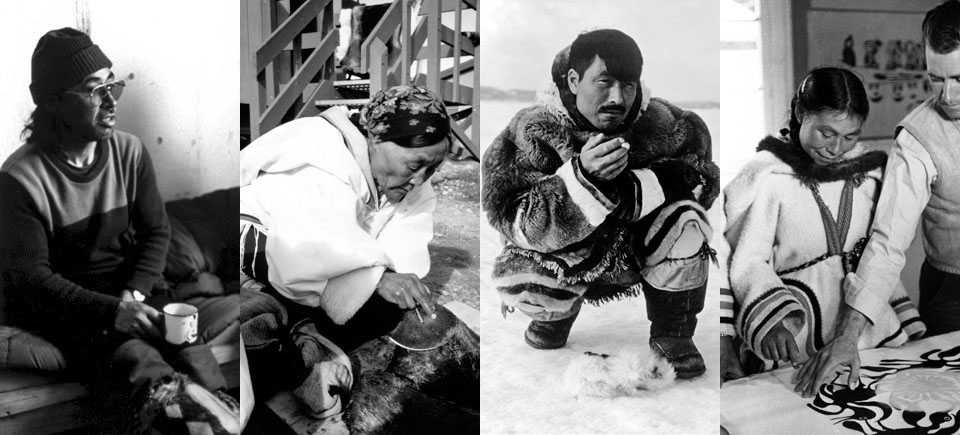
Arctic Art | Watch 7 NFB Films on Inuit Art and Artists
Arctic Art | Watch 7 NFB Films on Inuit Art and Artists
Often created from bone, ivory, leather, antler and stone, artwork from the peoples of the Arctic speaks of a rich connection to the land and to ancestral spirituality.
It is among the most powerful and evocative forms of expression you can find.
An integral part of Inuit culture for millenia, Inuit art seduced Southern Canada and the rest of the world in 1949, when the first commercial exhibition took place in Montreal.
The event was a huge success. By the 1960s, co-operatives were set up in most Inuit communities and the Inuit art market began to flourish.
Enjoy an inspiring journey through the life and works of Inuit artists with these 7 short NFB films.
Watch them all free below.
1 – Eskimo Artist Kenojuak Ashevak
Follow Kenojuak Ashevak (1927-2013), the first woman ever involved with the printmaking co-operative in Cape Dorset, as she transfers one of her stunning drawings to stone and prints it. The film, by John Feeney, was nominated for an Oscar.
Regarding the use of the term “Eskimo” in the title, Feeney wrote in 1993 that he had suggested using the now-accepted term “Inuit” in the film, but had been told that it would be confusing for non-Inuit audiences of the day.
More about Ashevak, one of the most notable Canadian pioneers of modern Inuit art here.
Eskimo Artist: Kenojuak, John Feeney, provided by the National Film Board of Canada
2 – Canada Vignettes: Inuit Pipe
Get lost in the intricate details of an Inuit pipe in this 1-min doc from the Canada Vignettes series. Black etchings, carved into ivory, represent daily activities like hunting, fishing and children at play.
Canada Vignettes: Inuit Pipe , , provided by the National Film Board of Canada
3 – The Living Stone
This film, also by John Feeney, and also nominated for an Oscar, is a fascinating exploration of Inuit stone carving within the larger context of traditional Inuit life. It brings to the screen the legend of Nuleakjuk, “mother of all life in the sea,” whose image is carved by the hunter Niviaksi in order to bring food to a hungry camp.
The Living Stone, John Feeney, provided by the National Film Board of Canada
4 – Kamik
Meet Ulayok Kaviok, one of the last generation of Inuit born and raised on the land. As she strives to balance two worlds – North and South – Kaviok continues making sealskin boots known as kamik, a vital element of the traditional hunter’s apparel.
Kamik, Elise Swerhone, provided by the National Film Board of Canada
5 – I Can Make Art… Like Andrew Qappik
This short doc zooms in on Andrew Qappik, a world renowned Inuit printmaker from Pangnirtung, Nunavut. Here, the artist captivates his student audience by creating a soapstone relief print before their eyes. Then it’s the kids’ turn.
I Can Make Art … Like Andrew Qappik, Jane Churchill, provided by the National Film Board of Canada
6 – Aki’name (On the Wall)
This is the story of Kumukluk Saggiak and Elijah Pudlat, two young Inuit stonecarvers who were invited to decorate a giant mural in Canada’s Katimavik pavilion at Expo 67 in Montreal. The short film shows the artists at work and shares impressions of their Southern voyage among the Qallunaat (white people.)
Aki’name (On the Wall), David Millar, provided by the National Film Board of Canada
7 – Lypa
Many travel the other direction, but Lypa Pitsiulak decided to take his family and return to the land. For the Inuit hunter and artist, it was imperative to rediscover his culture, teach his family survival skills in the harsh Arctic climate environment and put some distance between them and the negative influences of white culture. The film illustrates the family’s traditional lifestyle and highlights Pitsiulak’s prints and sculptures, which weave together figures from the animal, spirit and human worlds.
Lypa, Shelagh Mackenzie & Sharon Van Raalte, provided by the National Film Board of Canada
See also
Sealskin Stop Motion: Co Hoedeman’s Inuit Legends
Unikkausivut – Sharing our Stories
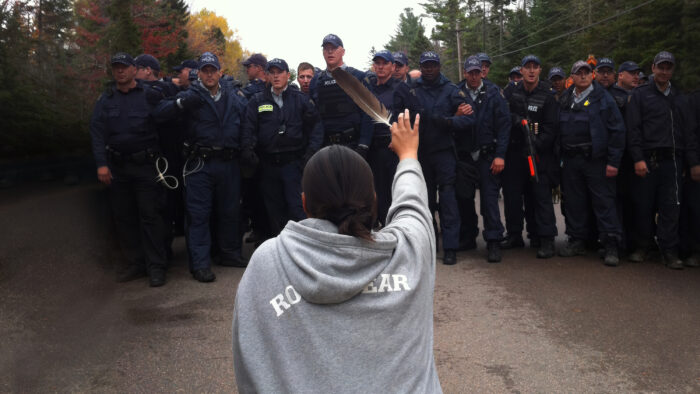
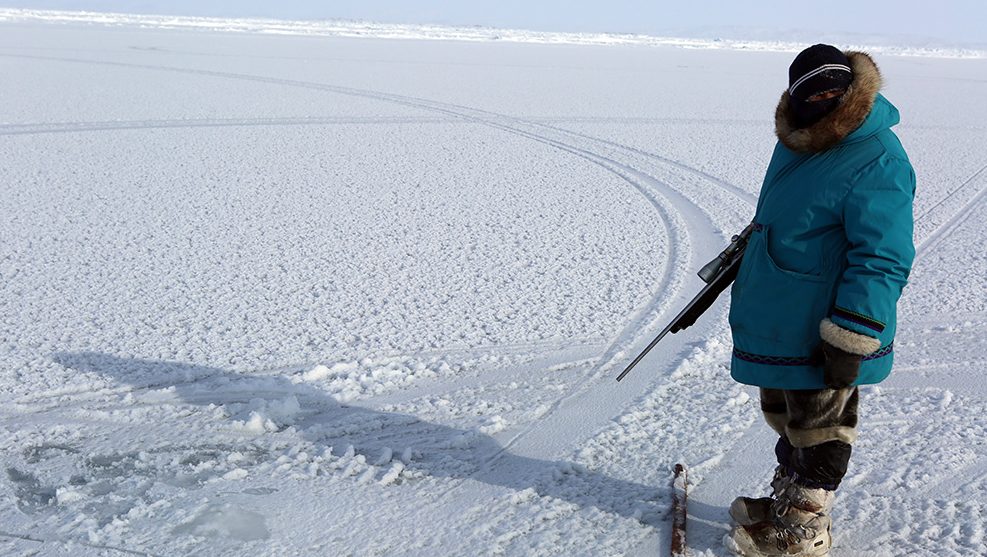
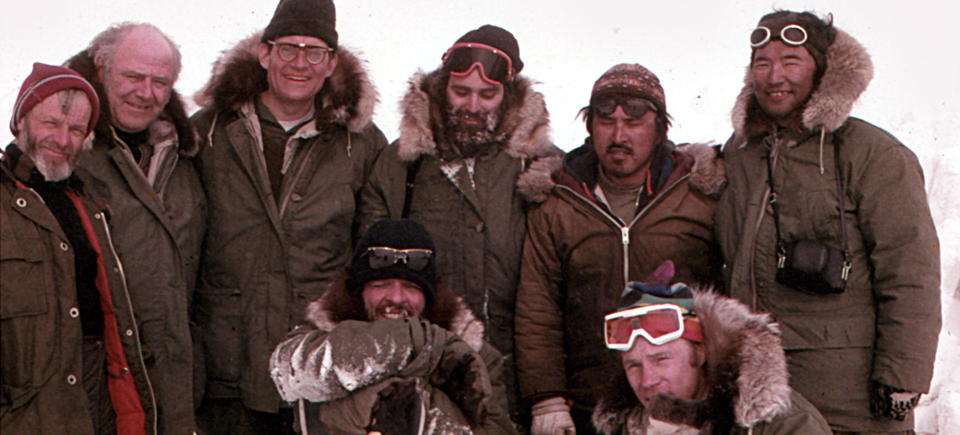
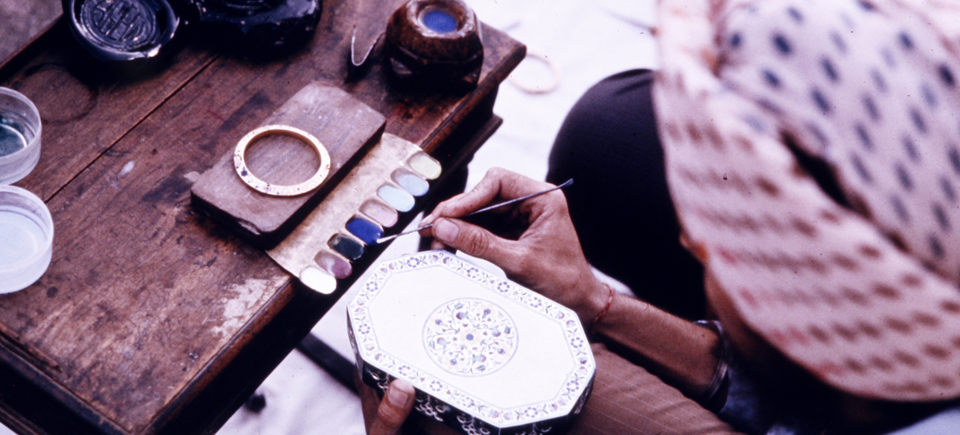
To live in harmony with the most extreme elements makes the circumpolar people the most highly developed on earth. I honor them.
Thank you NFB for the many films about them. Please make more.
What is date of the pipe, please?
Love all of this